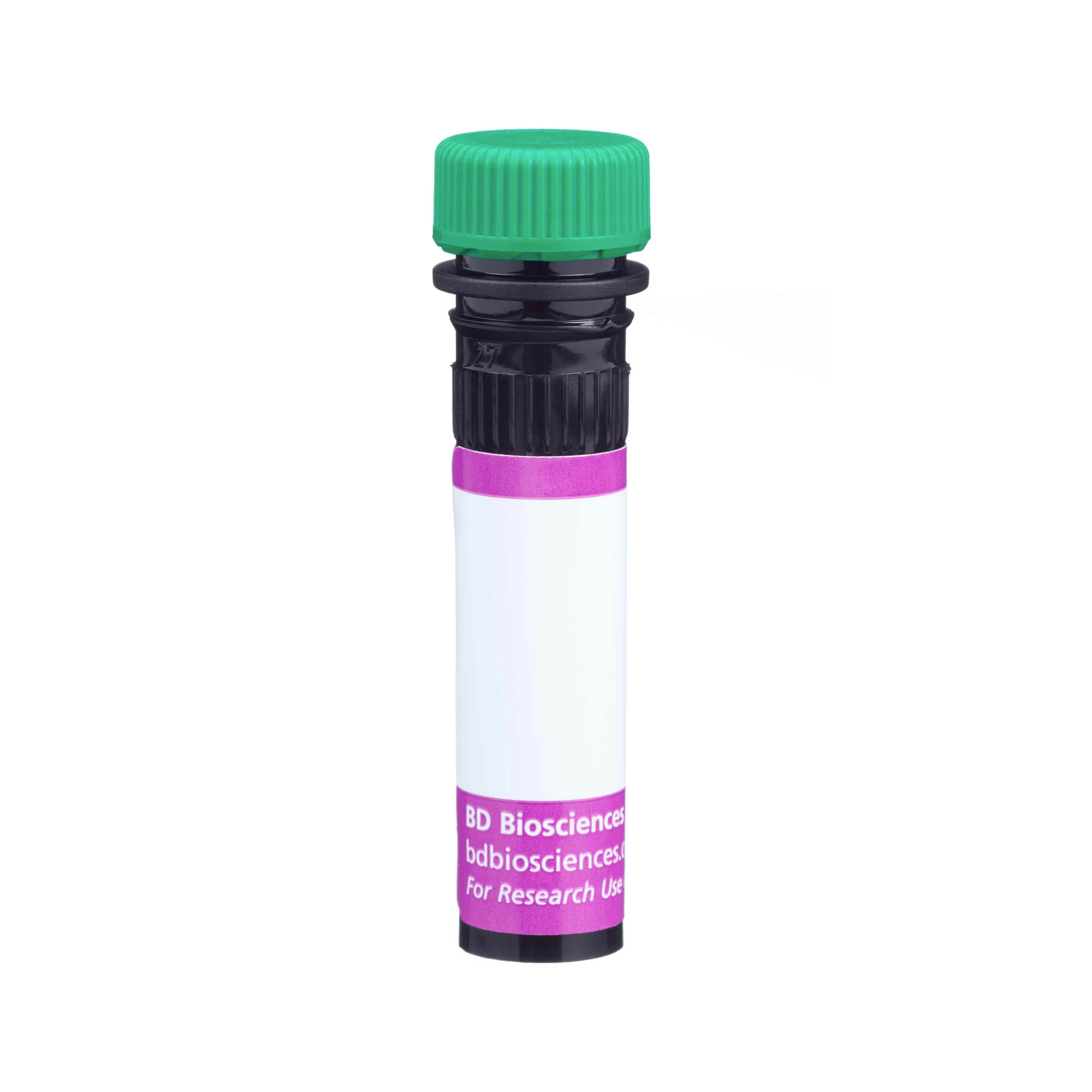Old Browser
This page has been recently translated and is available in French now.
Looks like you're visiting us from United States.
Would you like to stay on the current country site or be switched to your country?
BD OptiBuild™ BV480 Mouse Anti-Mouse TCR Vδ6B
Clone F4.22.rMAb (also known as Anti-Vδ6λ12) (RUO)


Regulatory Status Legend
Any use of products other than the permitted use without the express written authorization of Becton, Dickinson and Company is strictly prohibited.
Preparation And Storage
Recommended Assay Procedures
BD® CompBeads can be used as surrogates to assess fluorescence spillover (compensation). When fluorochrome conjugated antibodies are bound to BD® CompBeads, they have spectral properties very similar to cells. However, for some fluorochromes there can be small differences in spectral emissions compared to cells, resulting in spillover values that differ when compared to biological controls. It is strongly recommended that when using a reagent for the first time, users compare the spillover on cells and BD® CompBeads to ensure that BD® CompBeads are appropriate for your specific cellular application.
For optimal and reproducible results, BD Horizon Brilliant™ Stain Buffer should be used anytime BD Horizon Brilliant dyes are used in a multicolor flow cytometry panel. Fluorescent dye interactions may cause staining artifacts which may affect data interpretation. The BD Horizon Brilliant Stain Buffer was designed to minimize these interactions. When BD Horizon Brilliant Stain Buffer is used in in the multicolor panel, it should also be used in the corresponding compensation controls for all dyes to achieve the most accurate compensation. For the most accurate compensation, compensation controls created with either cells or beads should be exposed to BD Horizon Brilliant Stain Buffer for the same length of time as the corresponding multicolor panel. More information can be found in the Technical Data Sheet of the BD Horizon Brilliant Stain Buffer (Cat. No. 563794/566349) or the BD Horizon Brilliant Stain Buffer Plus (Cat. No. 566385).
Product Notices
- Please refer to www.bdbiosciences.com/us/s/resources for technical protocols.
- Please refer to http://regdocs.bd.com to access safety data sheets (SDS).
- For U.S. patents that may apply, see bd.com/patents.
- Caution: Sodium azide yields highly toxic hydrazoic acid under acidic conditions. Dilute azide compounds in running water before discarding to avoid accumulation of potentially explosive deposits in plumbing.
- Since applications vary, each investigator should titrate the reagent to obtain optimal results.
- The production process underwent stringent testing and validation to assure that it generates a high-quality conjugate with consistent performance and specific binding activity. However, verification testing has not been performed on all conjugate lots.
- Human donor specific background has been observed in relation to the presence of anti-polyethylene glycol (PEG) antibodies, developed as a result of certain vaccines containing PEG, including some COVID-19 vaccines. We recommend use of BD Horizon Brilliant™ Stain Buffer in your experiments to help mitigate potential background. For more information visit https://www.bdbiosciences.com/en-us/support/product-notices.
- For fluorochrome spectra and suitable instrument settings, please refer to our Multicolor Flow Cytometry web page at www.bdbiosciences.com/colors.
- An isotype control should be used at the same concentration as the antibody of interest.
Data Sheets
Companion Products






F4.22.RMAB is a recombinant form of the F4.22 monoclonal antibody. The F4.22 antibody specifically recognizes TCR Vδ6B subfamily members that have more than 90% identity at the nucleotide level with the previously described pλ12 and is also referred to as Anti-Vδ6λ12. The F4.22 antibody recognizes two members of the Vδ6/ADV subfamily expressed in C57BL/6 (B6) mice and at least one subfamily member expressed in DBA/2 mice. The F4.22 antibody does not recognize any TCR γδ T cell hybridomas expressing different TCR Vδ chains including other members of the TCR Vδ6 subfamily. The F4.22 antibody stains sizable proportions of Vγ1+, Vγ4+, and Vγ7+ γδ T cells prepared from the thymus, spleen, lymph nodes and intraepithelial lymphocytes (IELs) and T cell hybridomas derived from B6 mice. It likewise stains Vγ1+ and Vγ7+ γδ T cells from C57BL/10 and B10.D2 that share the same TCRδ haplotype. It does not stain any γδ T cells from BALB/c, C3H/HeJ, CBA/J, 129/Sv and FVB/N mice.

Development References (2)
-
Pereira P, Hermitte V, Lembezat MP, Boucontet L, Azuara V, Grigoriadou K. Developmentally regulated and lineage-specific rearrangement of T cell receptor Valpha/delta gene segments.. Eur J Immunol. 2000; 30(7):1988-97. (Biology). View Reference
-
Zeng W, O'Brien RL, Born WK, Huang Y. Characterization of Mouse γδ T Cell Subsets in the Setting of Type-2 Immunity.. Methods Mol Biol. 2018; 1799:135-151. (Biology). View Reference
Please refer to Support Documents for Quality Certificates
Global - Refer to manufacturer's instructions for use and related User Manuals and Technical data sheets before using this products as described
Comparisons, where applicable, are made against older BD Technology, manual methods or are general performance claims. Comparisons are not made against non-BD technologies, unless otherwise noted.
For Research Use Only. Not for use in diagnostic or therapeutic procedures.